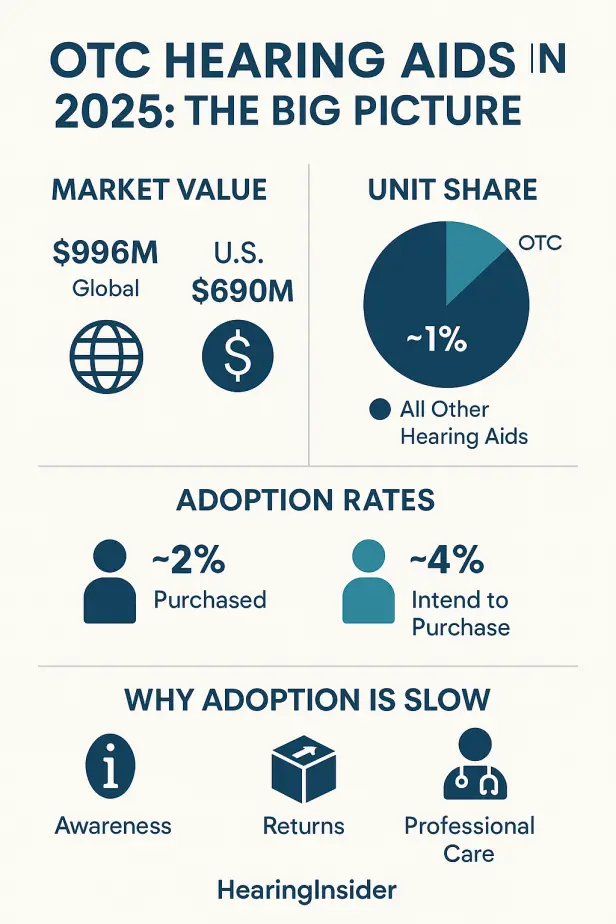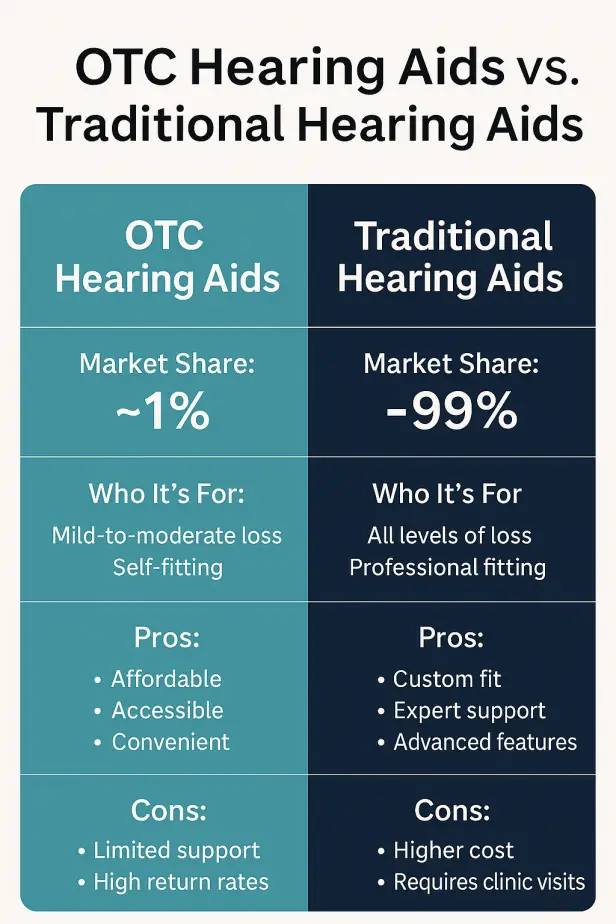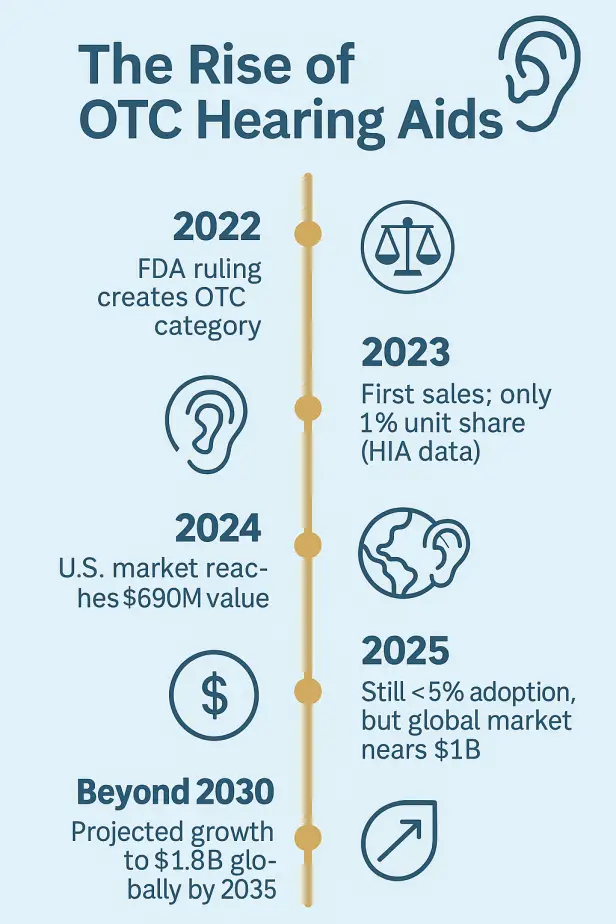Since the FDA’s ruling in late 2022, over-the-counter (OTC) hearing aids have been marketed as a lower-cost, more accessible option for adults with perceived mild-to-moderate hearing loss. But how many people are actually buying them? Let’s look at the latest data as of 2025.

Market Value vs. Unit Share
The OTC category is growing in terms of sales revenue, but the percentage of total hearing aids sold that are OTC remains very low.
- Global Market Value: Estimated at $996 million in 2025, with projections to reach nearly $1.8 billion by 2035.
- U.S. Market Value: Estimated at $689.8 million in 2024, with a compound annual growth rate of about 9% through 2030.
👉 These figures sound big, but they represent market value (revenue) — not the actual number of units sold.

Unit Share: Still Very Small
When it comes to actual sales volume, OTC hearing aids make up only a tiny fraction of the total market:
- In Q1 2023, OTC hearing aids accounted for about 1% of hearing aids distributed by Hearing Industries Association (HIA) members.
- Population surveys confirm that only ~2% of adults with hearing difficulty have purchased an OTC hearing aid.
- About 4% of adults say they intend to buy an OTC device in the next year.
As of 2025, no new large-scale tracking data has been released to replace the HIA’s 2023 numbers, but all available evidence suggests that OTC hearing aids remain a very small share of total units sold.
Why Are OTC Sales Still Low?
Several factors are keeping OTC hearing aid adoption modest:
- Awareness and Trust – Many consumers either don’t know OTC options exist or are hesitant to self-fit without professional guidance.
- Product Quality and Returns – Some OTC models have high return rates (reported up to 30% or more), discouraging broader uptake.
- Preference for Professional Care – Many people still prefer an in-person evaluation and fitting by an audiologist, especially for more complex hearing needs.
Quick Comparison: Market Value vs. Adoption

| Metric | Data Point (2025) |
|---|---|
| Global OTC Market Value | ~$996 million |
| U.S. OTC Market Value | ~$689.8 million |
| OTC Share of Units Sold | Still ~1% (based on HIA data) |
| Adults Who Purchased OTC | ~2% |
| Adults Planning to Buy OTC | ~4% |
What This Means for Hearing Aid Users
If you’re considering OTC hearing aids, remember:
- They may be a good starting point if you have mild hearing loss and are comfortable adjusting the devices yourself.
- For more advanced hearing needs, or if OTC devices don’t provide enough benefit, a professional evaluation is still the best route.
If you’re curious, check out these related guides:
- What to Expect Before Getting Hearing Aids
- Best Hearing Aid for Background Noise
- Can Hearing Aids Cause Ear Infections?
- Guide to Captions & Subtitles for Hearing Aid Users
Final Takeaway
While the OTC hearing aid market is growing in revenue, its share of total hearing aids sold in 2025 is still very small — likely hovering near 1–2% of total units. Most hearing aid users continue to rely on professionally fitted devices, but OTC options may expand as awareness increases and technology improves.

